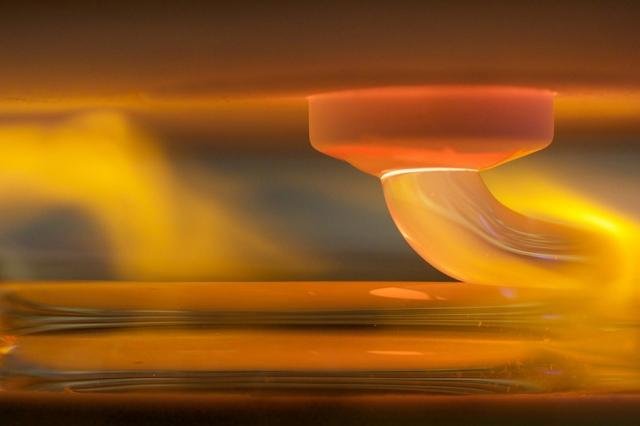Molten glass being formed by 3-D printer. It's the first 3-D printer to successfully shape transparent glass. Photo by MIT
BOSTON, Sept. 14 (UPI) -- Researchers at MIT have developed the technology to create 3-D printed objects with transparent glass.
Biomaterials, plastics, metals and a variety of synthetics have be used with 3-D printing technology. But this is the first time material scientists have adapted the device for transparent glass.
The major hurdle has been harnessing the high temperatures necessary to melt glass without damaging the 3-D printer itself or interfering with the already formed portion of the printed product --Too hot and the added material could melt what's already been formed, too cold and the and the new material may not properly adhere to the formed material.
Previous attempts have utilized a technique known as a "sintering," whereby tiny pieces of glass are molded together at lower temperatures. But method, however, produced glass that was weak and cloudy.
The printer is designed so that each printing component is heated separately, allowing more precise control of the temperature at each stage -- the upper reservoir of molten glass, the filament nozzle where the glass is shaped and the lower chamber where the formed object is built up from.
Researchers say their new technology could produce objects featuring shapes and intricacies traditional glass blowing methods can't achieve. The printer is detailed in a new paper in the Journal of 3D Printing and Additive Manufacturing.
"We can design and print components with variable thicknesses and complex inner features -- unlike glassblowing, where the inner features reflect the outer shape," study author Neri Oxman, an associate professor at the MIT Media Lab, explained in a recent news release.
"We can control solar transmittance," Oxman added. "Unlike a pressed or blown-glass part, which necessarily has a smooth internal surface, a printed part can have complex surface features on the inside as well as the outside, and such features could act as optical lenses."















